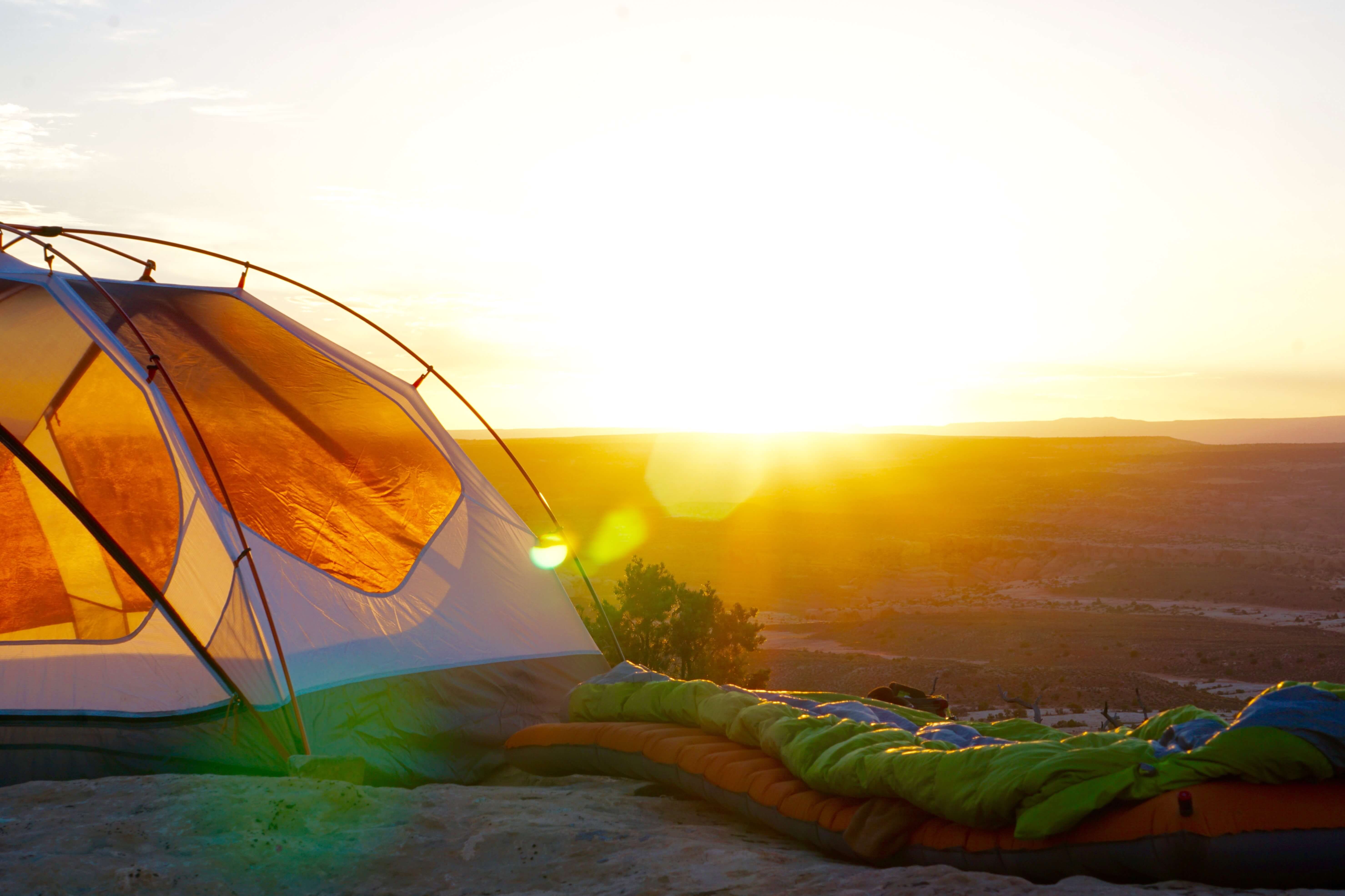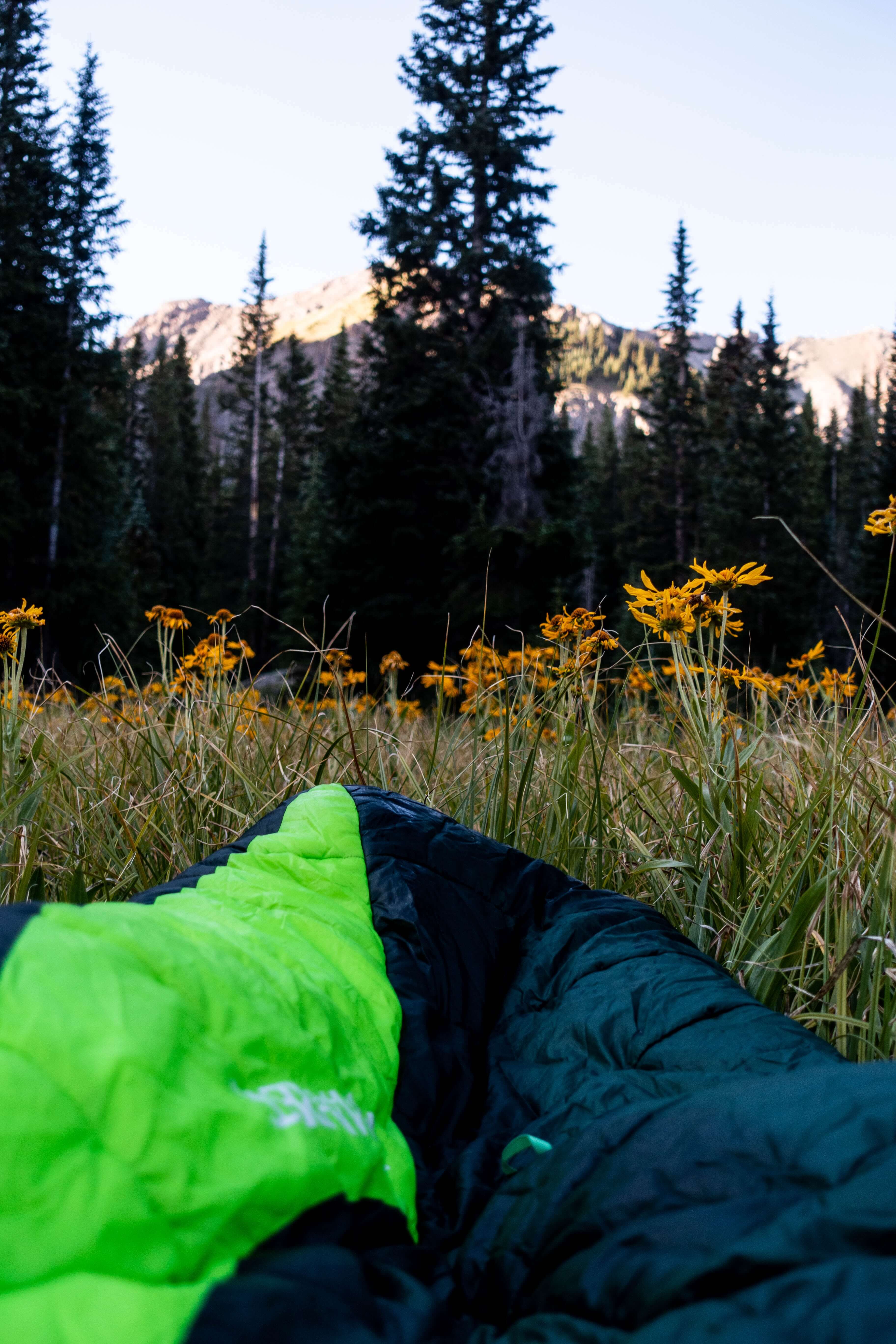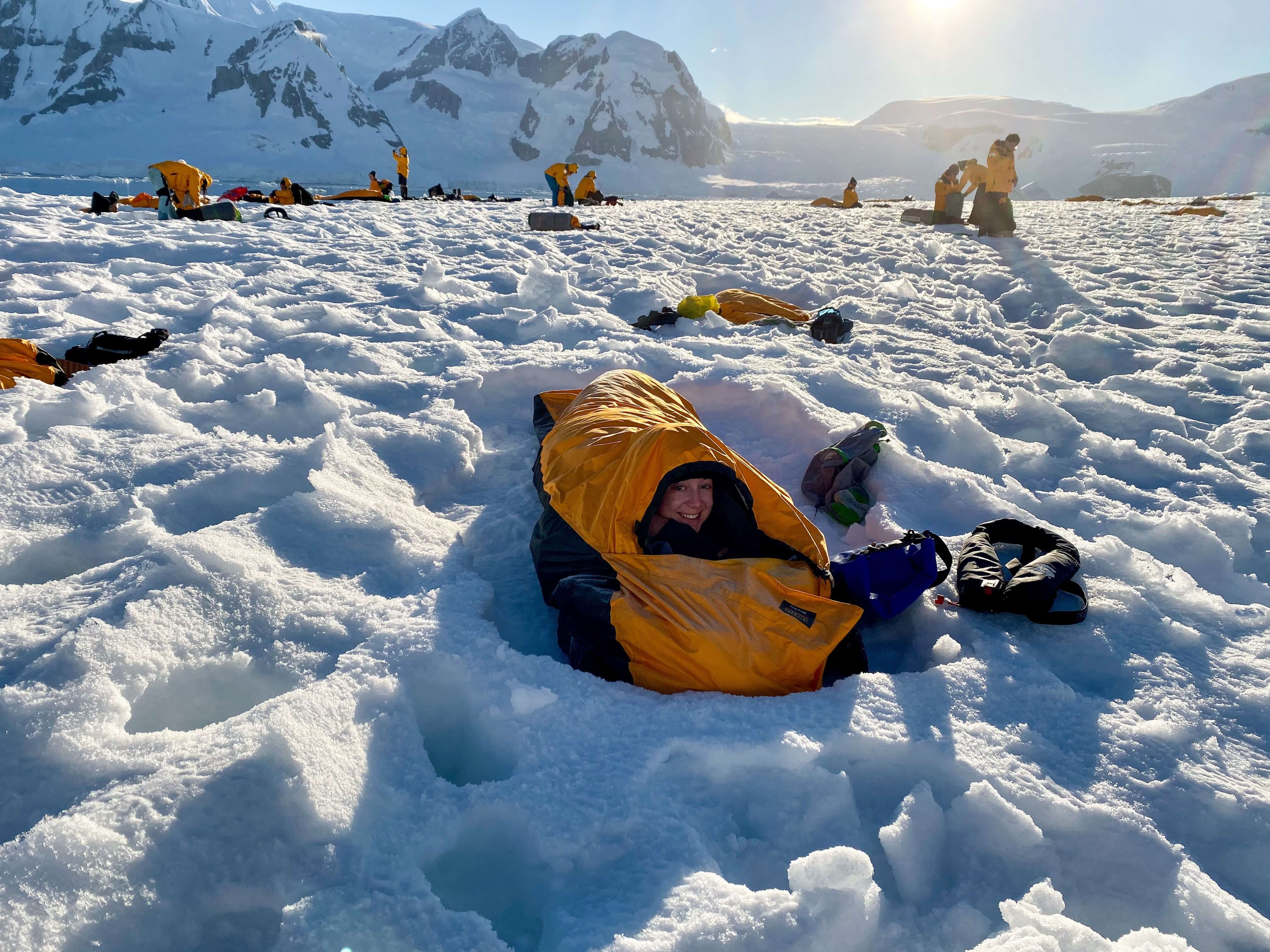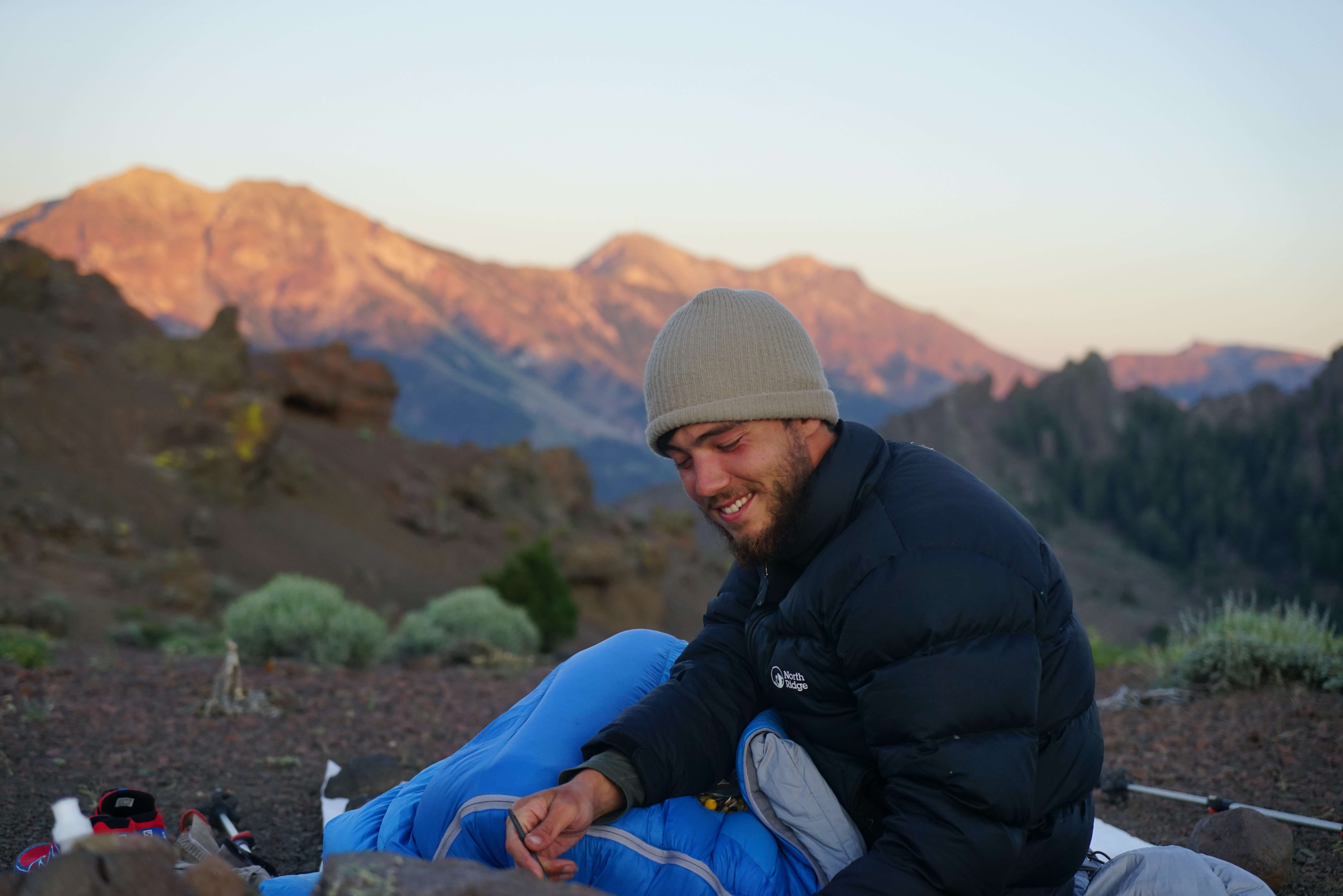The Ultimate Sleeping Bag Buying Guide

If you are planning on spending any time in the great outdoors, be it an overnight at the beach or a tour of the highlands, sleeping in comfort is paramount to getting the most out of each day. For this reason, you should take some time to research the various types of sleeping bags before purchasing one.
Styles:
There are several sleeping bag styles, and the style dictates its most popular use. The two most well-known are rectangular and mummy. But maybe you only need a sleeping pad as opposed to a sleeping bag - or maybe you would like a sleeping bag suit - check in with your needs first.
Camping in a camper-van, or using a bunk or a cot, you'll most likely feel at home in a traditional rectangular sleeping bag. The pro is comfort they often zip on two sides, are easy to slip into, and provide plenty of room for a variety of sleep positions. Designs such as the Outwell Constellation Lux Sleeping Bag even unzips completely to create a large duvet. Their con is that they tend to be bulky and unruly when trying to minimize weight and volume.
If your plans involve backpacking the mummy bag style is most appropriate. These are designed wider at the shoulders and taper toward the feet creating a foot box at the bottom. This style is popular for its packability into relatively small bundles and well as its lighter weight. Even mummy bags rated for below-freezing temperatures easily pack into relatively small compression sacks.
Mummy bags come in a variety of shapes and sizes. More generous bag designs allow for more room at the shoulders and the legs while narrower bags may be warmer but restrict movement. Women-specific bags are intended to fit a woman's proportions and often provide extra room at the torso and hips. As far as length, you are best to choose a bag based on manufacturer's recommendations for "sized up to height…"
Temperature ratings:
Temperature ratings are the second parameter that is important in this guide to buying sleeping bags. You want to choose a bag that is rated to perform in the coldest conditions you expect.
It used to be that companies tested and rated their bags in-house and the results were either too conservative or too inflated. The ratings were at the best a rough estimate used to pick the correct bag for your needs. Now, nearly every company utilizes the EN (European Norm) 13537 testing protocol. The testing, performed in certified international labs, is accepted as the most objective and accurate rating available. It allows the consumer to compare sleeping bags across all brands. The EN protocol bases its results on the user wearing one long underwear layer, a beanie and laying the sleeping bag upon a 1" thick insulation mat.
From here, each EN-rated bag is assigned two ratings: the comfort range is the lowest temperature at which the average woman will stay warm using the bag. The lower-limit is the lowest temperature at which the average man will stay warm using the bag. This range addresses the different temperature at which males and females are comfortable while sleeping. Women usually feel colder than men when they sleep and thus often need a warmer sleeping bag.
Sleeping bags are divided into three "classes" using their temperature ratings: summer, 3-season, and winter.
A summer season bag, like these cotton sleeping bags, is ideal for camping under the stars as temperature ratings are 2 degrees Celsius and higher. Three-season bags range from -12 degrees to 4 degrees while winter bags are anything given a rating below 10 degrees. The bags, if EN-rated, are expected to perform at the temperatures listed. An ideal example of a 3-season bag is the Easy Camp Nebula 350 Mummy Sleeping Bag. It features a comfort rating of 4 degrees Celsius and a limit rating of -1 degrees Celsius. A two-way zipper allows you to adjust for individual temperature preferences.
If your bag is not EN-rated, choose it based on the lowest temperature that you expect, even if that temperature is not guaranteed. Unzipping the zipper at your feet or venting at the sides of the bag if you are too hot is much more desirable than shivering because your bag isn't warm enough.
Insulation:
Deciding on the sleeping bag insulation type is the third major decision. Down and synthetically insulated bags have existed for decades. While there are certainly personal preferences for each, they have their pros and cons. Additionally, hybrids of the two have been added to the mix, complicating the decision-making process.
Down:
Of the different fills available for sleeping bags, down ranks highest in warmth, weight, and durability. It is more expensive than synthetic fills but keeps its original loft (which creates pockets of heat-trapping air) longer than synthetics making it a winner over the long haul.
When talking about the down's ability to create a heat-trapping air space, the term "fill" is used. This calculation is determined by how much space 20grams of down takes within a testing tube. If the manufacturer uses the EN 12130 standard, it is performed in a similar manner to EN temperature ratings. The procedure is codified and consistent across all products.
The higher the ‘fill', the more insulation is provided at a lighter product weight. This weight differential results from using feathers from mature birds. For instance, a 400cm3/gram fill sleeping bag provides more loft than a 250cm3/gram fill bag and is lighter in overall weight.
There are two types of down, duck and goose. While duck down is not able to provide fill greater than 1380 grams per cubic centimeter, goose down can often achieve ratings as high as 1550 or more. The con is that goose down is much more expensive. Goose down is often reserved for winter mountaineering sleeping bags.
If you are looking at products made overseas, the fill power is indicated in ounces, but the principle is identical.
As a natural insulation down has one primary downside. When it becomes wet, it flattens out and therefore loses its ability to trap heat. Many down sleeping bags are sewn from water resistant fabrics and sometimes even coated in durable water repellant (DWR). More recent technology treats the down feathers themselves so that they more effectively repel water. This treatment also helps the down dry out faster in the event it does get soaked. The technology is water-resistant, not waterproof, so if you are caught in a deluge, your sleeping bag will still get wet; it will simply take less time to dry.
Synthetic:
Synthetic insulation is usually sewn from polyester or a derivative. It is non-allergenic and less expensive than down. Additionally, because the fibers do not flatten while wet, synthetic bags often retain their warmth better than down bags.
The con with synthetics is that even though they retain warmth while wet, it is less insulating for its weight. Additionally, synthetic bags are bulky, and the fibers do not rebound after being compressed.
Synthetic insulations have been given several proprietary names with Polarguard and Thermolite being among them. Each type has its strengths, but it is most important to know if the material features a short-staple or a continuous filament.
While short-staple are the most oft-used filaments, the nature of the shorter, more flexible strands means that the bags are less durable. The inverse is true with a continuous filament which provides more durable insulation at the expense of softness and flexibility.
Regardless of the insulation used, the basic principle is that the sleeping bag is designed to hold a layer of ‘dead' (non-circulating) air against your body. Your body heats this air to keep you warm, and the bag provides a layer of protection from the cold ground and outside air. Rectangular bags are designed with more room and therefore, they are not able to hold a thin layer of air efficiently against your body. The thinner the layer of air the faster you warm up. For this reason, mummy bags are much more efficient in colder temperatures.
Hybrid
Several manufacturers use both synthetic and down insulation in tandem in their sleeping bags. They may use water-resistant down with polyester insulation to increase drying power while minimizing weight. Another method is to use the different insulations are different points throughout the bag. For example, you may find synthetic insulation on the underside of a bag and a loftier, warmer down insulation on the top.
Construction:
You can't talk about fabrics and insulation without mentioning the construction used in each type. That would be akin to admiring a tailored suit and never mentioning the fine stitching. The construction methods work hand-in-hand with the sleeping bag insulation type.
Down: baffled and sewn-through
Because down is not a continuous layer, rather thousands of small feathers gathered together, it is not prone to staying in place when trapped beneath two sheets of fabric. The construction methods used allow the feathers to retain loft, which provides air and thus insulating properties while keeping the feathers where you need them.
Baffled construction creates a series of three-dimensional volumes (baffles) sewn together. Each volume has sidewalls that hold the feathers in their respective baffle. The pro to baffled construction is that there is more air-space between the feathers and the insulation is consistent. Baffles may be rectangular, trapezoidal, or even slanted to conform to the desired shape of the final product.
Some bags have baffles that run a ring around the body from front to back without intermittent sidewalls. This construction method allows the user to shift the down from the underside of the bag to the top, and vice-versa, to accommodate different temperatures. Sleeping bags with side baffles keep the feathers where they were initially placed, either on the top or the underside. Often, there will be a higher fill on the topside to provide additional protection against cold conditions.
Other types of baffles include stretch side baffles, which allow more movement flexibility for the user, and vertical baffles that run from the head to feet rather than around the bag. If you are looking for the utmost in water-resistant construction, some manufacturers offer welded baffle seams. Because they do not have stitches, and therefore no holes are punctured through the layers, welded seams are often the most air-tight as well as water resistant of construction techniques.
The sewn-through construction method sews the shell and liner together, at intervals, to create a series of feather-containing volumes without sidewalls. This technique is used primarily for lightweight, warm-weather sleeping bags because the stitching creates areas that cool air may seep in through.
With both construction methods, you will sometimes find more fill at areas such as the feet, which require more warmth. Baffling, as well as sewn-through techniques, keeps the fill where it is initially intended so that you won't have to shake your bag to optimize the arrangement of the feathers.
Synthetic: layered and shingles
Synthetic insulation also features two construction methods: layers and shingles.
Layer construction features two methods of its own. Offset-quilting adheres several layers of insulation to the outer layer of the sleeping bag and several more layers to the liner. The layers are then offset so that the stitching does not align. This design minimizes gaps through which cool air may seep and increases the bag's ability hold heat-trapping air pockets.
The second style of layer construction, quilted-through layers, is sewn in a manner similar to the sewn-through down layers. The insulation layer, placed between the outer layer and the liner, is quilted into the shape of the bag creating a singular layer of fabric. Because the stitching is not offset, cold spots are likely. This method is most popular in warm-weather bags.
The shingle technique of construction places over-lapping layers of insulation between the outer layer and the lining and stitches them together. Even though the stitches are not offset this method of configuring the insulation leaves very few opportunities for cold air to penetrate.
Wave shingles use the same method of overlapping layers but place a regularly spaced extra-long shingle in the same amount of space as a regular shingle. This design forces the longer one to form a ripple or 'wave' and adds loft to the insulating layer.
Additional Sleeping Bag Features:
Once you have chosen a sleeping bag based on style, temperature rating, and insulation, the three primary considerations, small details will begin to set the various manufacturers and bags apart.
While most bags, mummy and rectangular, feature a side zipper, there are a few that incorporate a front zipper. Whether you choose a right, left, or front zipper is a personal preference. Remember the side the zipper is on will be the side you are venting in the event that you feel too hot in the bag. If you wish to zip your bag together with your partner's bag, you will need one bag to have a left-hand zipper and one to have a right-hand zipper. You also need to be sure that the zipper teeth are the same size and that the length is the same length. Most bags use a ½ or ¾ length zipper.
Most mummy bags incorporate a hood and zipper baffles. The hoods are often easily cinched around your face to keep cold air out. They may feature a baffle at the neck (draft collar) to keep warm air inside the bag. Some are sewn with a pocket for a travel pillow. The Outwell Camper Sleeping bag is a unique rectangular bad that features a removable hood as well as a built-in pillow.
Even a welded seam bag needs a zipper. For this reason, a zipper baffle is an added detail that helps to keep cold air from leaking through the zipper teeth.
While a rectangular bag is roomy enough to move your legs and feet, a mummy style features a foot box. If you are a side sleeper, you might wish to look for a trapezoidal foot box. These are roomier and allow a more comfortable foot position. Because you are not going to have to force the bag to conform to your position, this shape allows the insulation to keep its loft ,which in turn keeps your feet warm.
Regardless of which style, temperature rating, or insulation you choose, the sleeping bags will have pros and cons. It is best to choose a bag based on its most extreme use so that you’ll have all the bells and whistles when needed. There is no reason that a mummy bag isn’t perfectly acceptable in a camper-van, whereas a heavy rectangular bag will be out of place on a thru-hike.
This was the Plant Camping Sleeping Guide Buying Guide!
< Back to guide list


